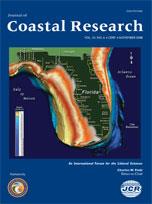Barrier-island chains worldwide are undergoing substantial changes, and their futures remain uncertain. An historical analysis of a barrier-island chain in the north-central Gulf of Mexico shows that the Mississippi barriers are undergoing rapid systematic land loss and translocation associated with: (1) unequal lateral transfer of sand related to greater updrift erosion compared to downdrift deposition; (2) barrier narrowing resulting from simultaneous erosion of shores along the Gulf and Mississippi Sound; and (3) barrier segmentation related to storm breaching. Dauphin Island, Alabama, is also losing land for some of the same reasons as it gradually migrates landward. The principal causes of land loss are frequent intense storms, a relative rise in sea level, and a sediment-budget deficit. Considering the predicted trends for storms and sea level related to global warming, it is certain that the Mississippi-Alabama (MS-AL) barrier islands will continue to lose land area at a rapid rate unless the trend of at least one causal factor reverses. Historical land-loss trends and engineering records show that progressive increases in land-loss rate correlate with nearly simultaneous deepening of channels dredged across the outer bars of the three tidal inlets maintained for deep-draft shipping. This correlation indicates that channel-maintenance activities along the MS-AL barriers have impacted the sediment budget by disrupting the alongshore sediment transport system and progressively reducing sand supply. Direct management of this causal factor can be accomplished by strategically placing dredged sediment where adjacent barrier-island shores will receive it for island nourishment and rebuilding.
How to translate text using browser tools
1 November 2008
Historical Changes in the Mississippi-Alabama Barrier-Island Chain and the Roles of Extreme Storms, Sea Level, and Human Activities
Robert A. Morton
ACCESS THE FULL ARTICLE
barrier restoration
channel dredging
human modifications
Sediment budget





